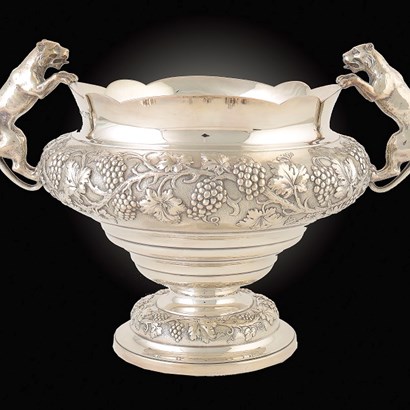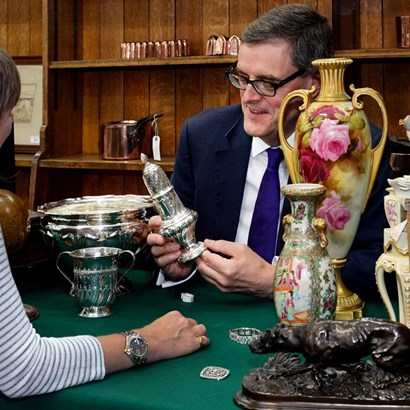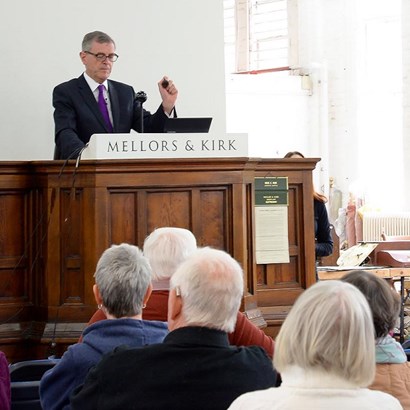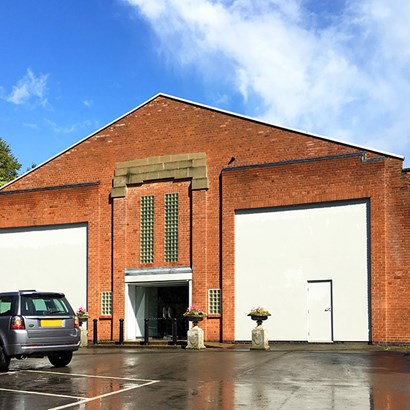Auction Insights
Lord Byron Southwell
It is surprising how a chance remark can lead to an amazing discovery. That’s what happened recently at Southwell, but although I knew the ‘what’ not before solving a riddle that would have puzzled Poirot could I answer both the ‘who’ and ‘why’. The result was truly exciting: To discover a book still on a Southwell bookshelf with a connection to Lord Byron 200 years after he lived there.
‘The Gitana’ – Spanish for gypsy - is an anonymous three volume novel that was published in 1845. The only clue to the author is a name at the end of the preface, ‘Sophie’, a nom de plume. Not even the British Library were aware of her identity. It is, quite frankly, not a literary masterpiece (which explains its scarcity) and was her only book. This particular copy is important because it is inscribed “Elizabeth Pigot Jany 25th 1845 the Gift of the authoress Mrs Wm Sturges Briggs of Sloane Street London”. Elizabeth Pigot (1783-1866) of Southwell is famous for having met and befriended Lord Byron when she was 21 and he 16. Their Southwell homes faced each other and she would play the piano while he sang. They continued to write to each other while he was at Cambridge University. Elizabeth was also an amateur artist who illustrated a delightful handmade children’s book, “The Wonderful History of Lord Byron and His Dog (Boatswain)”.
The Gitana’s owner, a local pensioner, came to one of Mellors & Kirk’s free valuation days at the Minster Centre with a few odds and ends and a photograph - of all things a splendid 1920s weighing machine operated by an old fashioned penny – that necessitated a home visit. Firmly resolved to de-clutter she asked me to look at a few other old things and amongst half a shelf of books was The Gitana with its fascinating inscription. The lady’s late husband was she said with a hint of exasperation, an inveterate hoarder who had spent over 40 years bringing home all manner of unwanted (by others) bygones.
Research later at The Auction House soon established that ‘Sophie’ or rather Mrs William Briggs was the wife of a London solicitor. She was born in London in 1821 and died in 1894. Merely out of curiosity as to how she came to be acquainted with the redoubtable Miss Pigot, I decided to look into her background. After several false starts I discovered that her father had been a London solicitor’s clerk called Joseph Houson. The 1809 indenture of his Articles of Clerkship to Nottingham solicitor Henry Percy is in the National Archives. Following this line of enquiry I discovered that he was one of the children of the Reverend Henry Houson (1753-1831) Vicar of Southwell.
That is significant because he was an important figure in the town at the time when the young Byron lived at Burgage Manor the house rented by his mother. Byron is supposed to have had during these years several affairs with a group of young women that became known as the ‘Southwell Belles’, one of whom was the vicar’s beautiful young daughter Anne Houson. A short poem of five stanzas written in 1807, an autograph manuscript of it by Byron was sold for over £18,000 at Sotheby’s in 2015. Byron wrote to his friends Elizabeth and John Pigot the same year to say that Anne was “a beautiful Girl, & I love her, not do I despair, unless some damned accident intervenes…”
Just as Miss Pigot was to prove an invaluable source to Byron’s first biographer, the Housons would also have been privy to many secrets about him because they were equally close. It is easy to understand why Sophie Briggs would have been keen to see whether Miss Pigot was impressed with the Gitana.
Whether it pleased Miss Pigot or otherwise this literary oddity will appeal to many that are interested in Byron and his circle. It is also of added interest because its existence has been completely unknown to Byron experts.
After the first biography of Byron was published with much of its information provided by Elizabeth Pigot, the publisher, John Murray, controversially burned many of Byron’s letters to prevent untold further scandals emerging.
Byron himself was to pretend he disliked provincial life in Southwell but actually had a whale of a time. Perhaps Elizabeth Pigot was one of those he had in mind when he penned a poem in Southwell addressed “To those ladies who have so kindly defended the author from the attacks of unprovoked malignity” as one ‘conquest’ after another fanned the rumous about this wild young man. Elizabeth would definitely be on my list of the 50 most interesting men and women in the history of Nottinghamshire. The Gitana will be sold in a specialised sale that includes fine printed books in June. The estimate is £300-500.
< Back to Auction Insights



